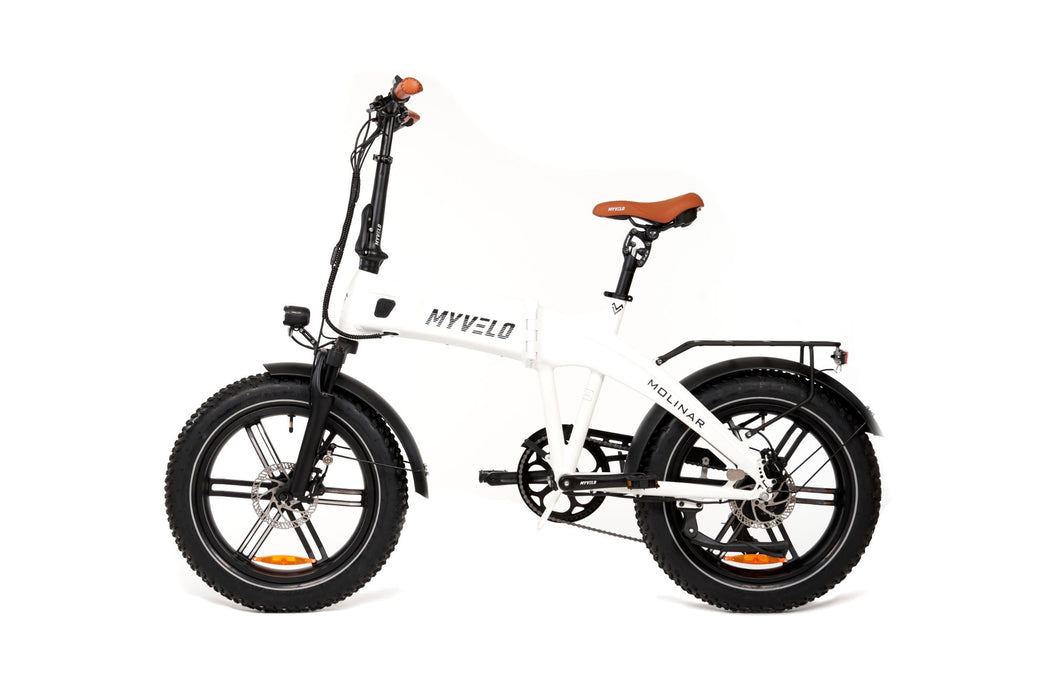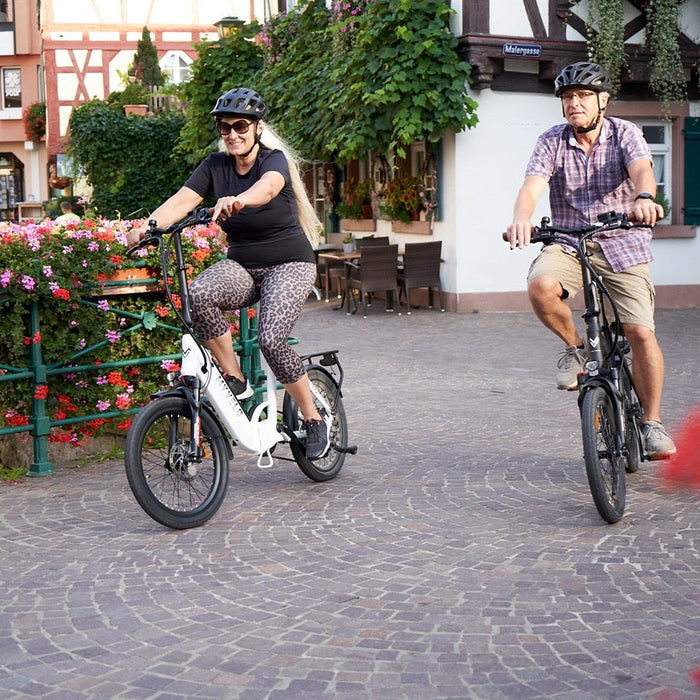
Molinar electric folding bike
incl. FREE shipping & free returns
Ready for dispatch immediately, delivery time 2-3 days.

E-bike lighting is an essential component of the electric bike, ensuring safety and comfort when riding at dusk or in the dark. It usually consists of front and rear lights, which are either powered directly by the e-bike battery or have their own, smaller battery. In contrast to conventional bicycle lighting, e-bike lighting is characterized by higher performance and better energy efficiency, which leads to improved visibility and thus increased safety. Modern e-bike lighting systems also offer a variety of functions such as daytime running lights, automatic brightness adjustment and flashing modes that optimize riding in different lighting conditions.
Advantages
Disadvantages

Stress ist längst zur Volkskrankheit geworden – Dauerbelastung im Job, private Verpflichtungen und ständige Erreichbarkeit führen bei vielen Menschen zu einem Gefühl der Überforderung. Doch es gibt einen einfachen Weg, den Kopf freizubekommen: Radfahren. Ob gemütlich durch den Park oder sportlich auf dem Rennrad – das Fahrrad wirkt wie ein natürliches Ventil für Stress. Warum das so ist, zeigt dieser Artikel.

Der Kettenverschleiß ist bei E-Bikes ein noch wichtigeres Thema als bei klassischen Fahrrädern. Der leistungsstarke Motor unterstützt die Pedalkraft, wodurch eine höhere Belastung auf die Kette wirkt.

Der Eco Modus ist eine der wichtigsten Unterstützungsstufen eines E-Bikes und bietet eine ideale Balance zwischen Motorunterstützung und Energieeffizienz. Doch was genau bedeutet Eco Modus, wann sollte man ihn nutzen und welche Vorteile bringt er im Alltag? In diesem Artikel erfährst du alles Wichtige über diese smarte Fahrstufe.